
Despite relative obscurity in Western historiography, Byzantine architecture has had a profound influence across the world. The Byzantines, also known as the Eastern Romans, developed a distinctive architectural style that has continued to influence construction to this day.
Not limited to the confines of the Byzantine Empire itself, the architecture of this enigmatic civilization made a significant impression on its Islamic and European contemporaries. In particular, converts to Christian Orthodoxy like the Kievan Rus and Bulgars took to the style, but the nearby Muslim powers also imitated Byzantine elements in the construction of their mosques.
After the fall of Constantinople and the Byzantine Empire in 1453, Byzantine refugees took their knowledge to Italy and Europe, where the Byzantine architectural style already had roots.
Long after the Byzantines themselves had faded into history, a revivalist architectural style emerged. Between the 1840s and nineteenth century, architects were inspired to construct modern buildings in the Neo-Byzantine or Byzantine Revival styles.

Who were the Byzantines?
“Byzantine” is a historiographical term used to describe the Eastern Roman Empire during the periods of later antiquity and the Middle Ages. The eastern half of the empire gained greater prominence in the fourth century AD, when Emperor Constantine moved the capital to Byzantium and renamed the city Constantinople.
The Byzantines would have referred to themselves as Rhōmaîoi (Ῥωμαῖοι), meaning Romans. They were a culturally Greco-Roman people although the wider empire contained a myriad of different peoples.
The lingua franca of the Eastern Mediterranean had been Greek since the Hellenistic period but replaced Latin as the official language of the empire in 629 AD. The capital and heartland of the empire were in Constantinople although it fell briefly to the crusaders in 1204.
Three Byzantine successor kingdoms existed in Nicea, Trebizond, and Epirus until Constantinople was recaptured in 1261 by the forces of Michael VIII Palaiologos. The empire survived until the fifteenth century when Constantine XI Palaiologos died during a final stand against the Ottomans in 1453.
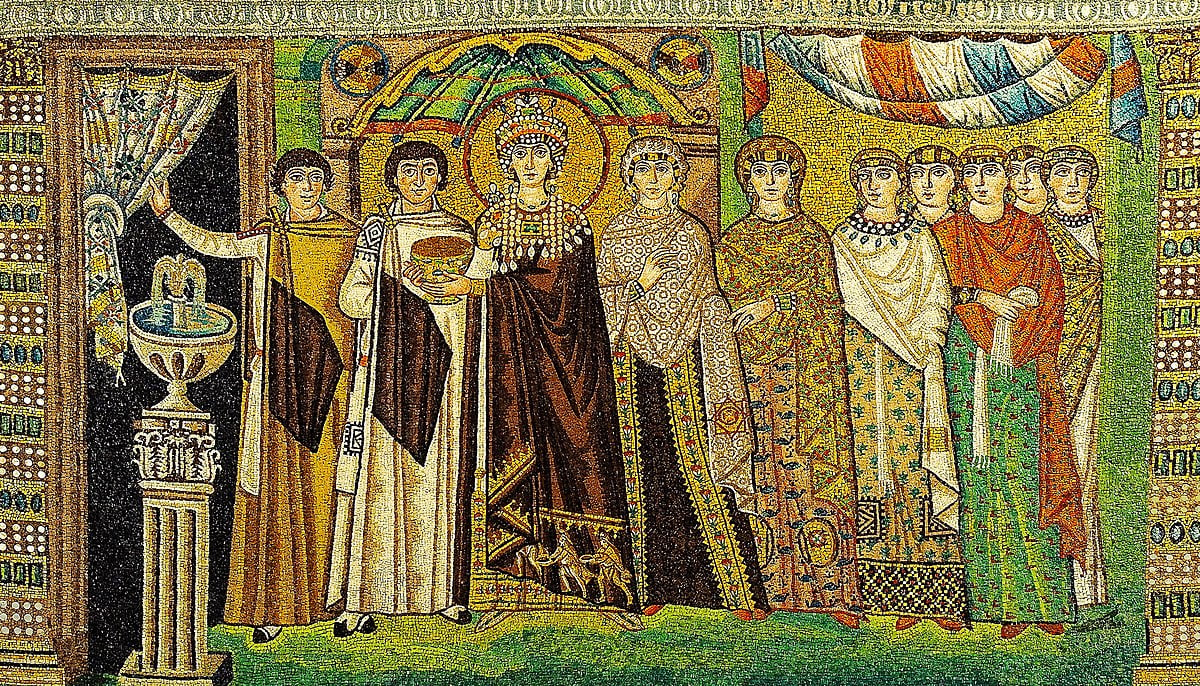
Features of Byzantine architecture
Byzantine architecture is characterized by high-riding domes and richly decorated mosaics. Columns and round arches are other features of the architectural style. Building materials during the Byzantine period were typically marble, stone, and bricks.
Historian Judith Herrin has noted that “Byzantine craftsmen adapted ancient techniques to new ends.” Indeed, Byzantine architects, artisans, and engineers brought the Greco-Roman architecture of antiquity into the Middle Ages.
The enduring symbol of this architectural style is the Hagia Sophia. The colossal cathedral was commissioned by the Byzantine emperor Justinian I and has dominated the cityscape of Constantinople since its completion in 360 AD.
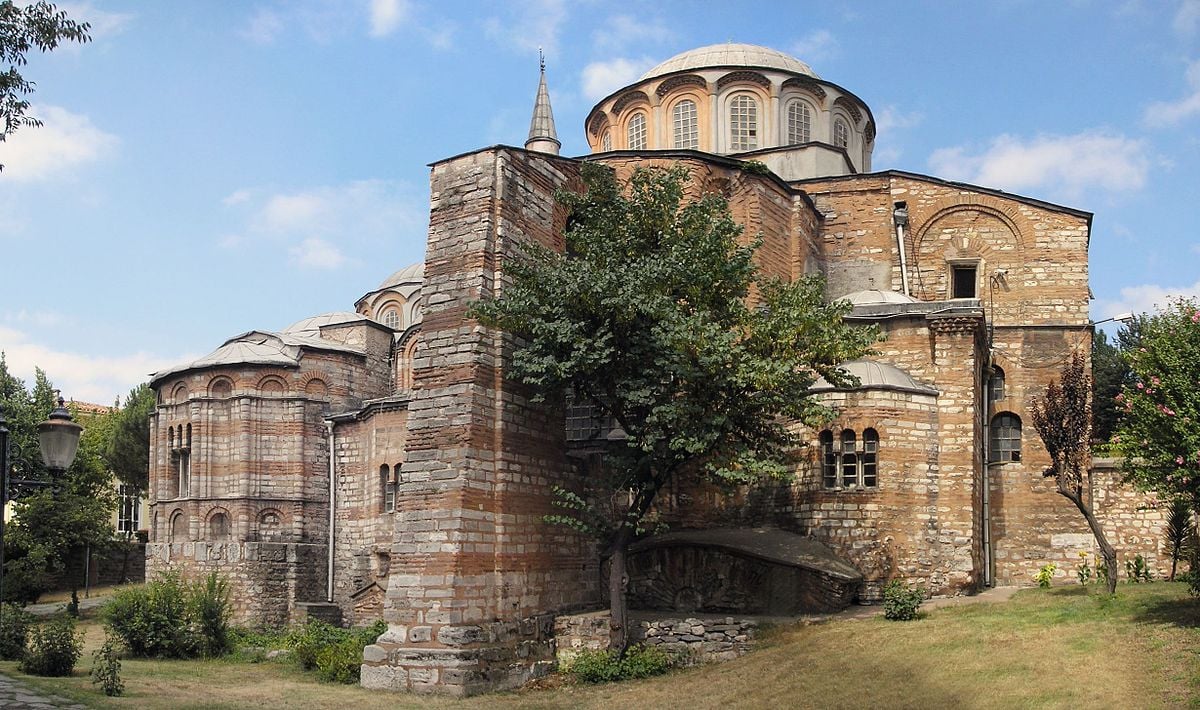
The Basilica of Sant’Apollinare Nuovo, Ravenna
During the sixth century AD, Italy had been conquered by the Ostrogothic Kingdom. King Theoderic the Great, leader of the Ostrogoths, had spent his youth as a political hostage in Constantinople where he was well-educated and absorbed into the traditions of the Byzantine imperial court.
During the first quarter of the sixth century, Theoderic ordered the construction of a palatial chapel in his capital city at Ravenna. It later became known as the Basilica of Sant’Apollinare Nuovo.
The basilica was built closely imitating the Byzantine architectural style. This is especially noteworthy because it was originally built as an Arian place of worship. The Byzantines considered Arianism to be a heretical sect of Christianity, but it was popular amongst Germanic peoples like the Ostrogoths.
Many Byzantine architectural features are visible. In particular, the mosaics which decorate the walls of the basilica are virtually indistinguishable from actual Byzantine mosaics of the same period.
The mosaics depict several important biblical figures including Jesus Christ, the Three Wise Men, and a number of saints. On the left mosaiced wall, Jesus is depicted as a beardless Roman emperor, whereas on the right he is portrayed as an older bearded man.

Dome of the Rock, Jerusalem
During the Muslim conquest of Syria, between 634 and 638 AD, the Byzantines lost control of Jerusalem. Despite a hostile relationship between the Byzantines and the Arabs, the latter were keen to incorporate elements of Byzantine architecture into their own construction projects.
Centuries of Roman rule meant that Byzantine architecture had left its mark on the city. Jerusalem’s new Muslim rulers were inspired to borrow certain stylistic elements from Byzantine churches in the region to incorporate into their mosques.
The best example is the construction of the Dome on the Rock, ordered by Umayyad Caliph Abd al-Malik between 691 and 692 AD.
Raja ibn Haywa, Yazid ibn Salam, and the latter’s son, Baha, were in charge of the project. They took inspiration from nearby Byzantine churches and palatial buildings, particularly those of an octagonal shape.
Byzantine craftsmen built the Dome’s interior mosaics in the Byzantine style. However, these mosaics communicated a purely Islamic message and did not feature any of the human figures common in Byzantine art.
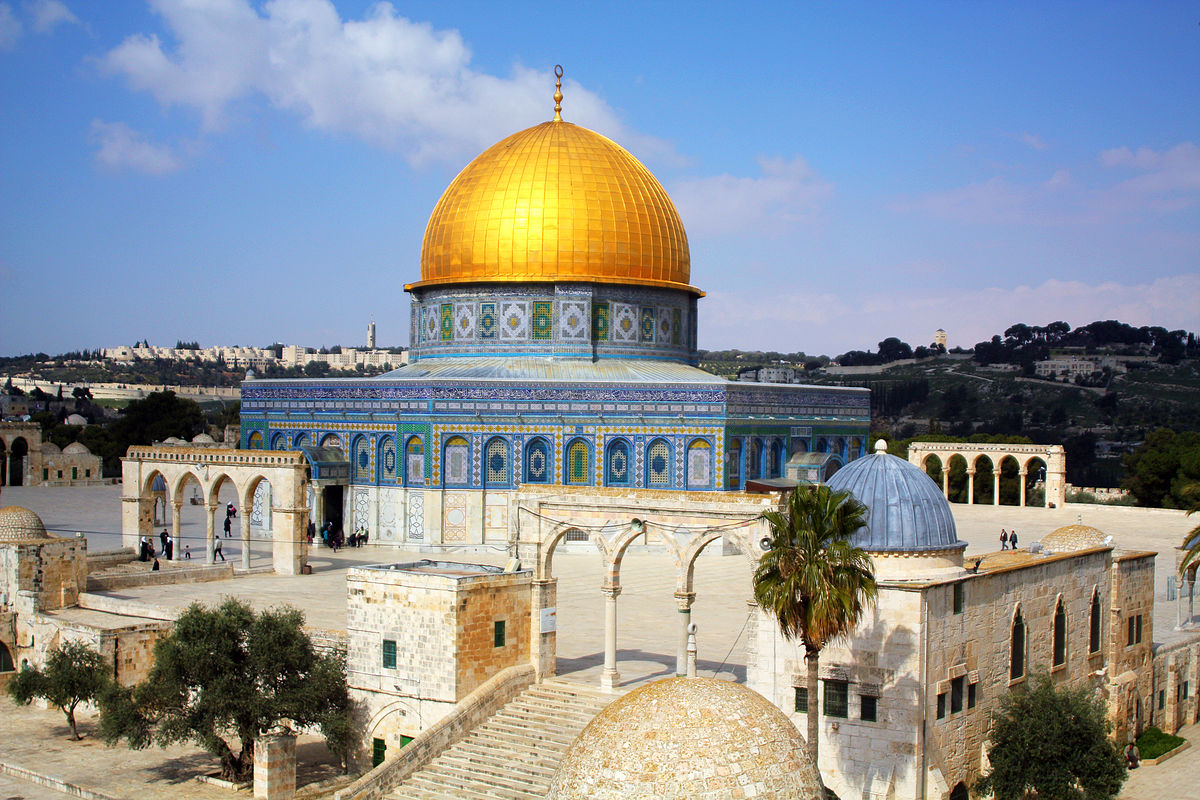
St. Mark’s Basilica, Venice
The Byzantines and Venetians shared a long history of cultural exchange, trade, and war. The founders of Venice were themselves Roman citizens, and the city was briefly brought under Byzantine rule by Justinian I in the sixth century AD.
As Venetian power waxed and Byzantine authority waned, the former annexed certain Byzantine territories, such as Crete.
St. Mark’s Basilica, one of Venice’s most iconic landmarks, has distinctly Byzantine architectural features, alongside Islamic, Romanesque, and later Gothic influences. The Basilica was originally built between 829 and 836 AD and rebuilt between 1063 and 1094.
Its original structure was based on the Church of the Holy Apostles in Constantinople, and it was centrally planned according to the Byzantine model, as opposed to the rectangular shape that was more common in the region.
The western façade, which remains comparable to middle-Byzantine churches erected in the tenth and eleventh centuries, was characterized by a series of arches set between protruding pillars.
Between the twelfth and fourteenth centuries, Venice fought a series of wars with the Byzantine Empire. The Venetians brought back many spoils of war that were of Byzantine origin, some of which adorned the basilica.
In 1204, after the crusaders sacked Constantinople, the Venetians brought back the Thriumphal Quatriga, a set of four-horse statues. The horses were added to the basilica as adornments. They are known today as Saint Mark’s Horses.

Post-Byzantine architecture in the Orthodox world
After the fall of Constantinople in the fifteenth century, several orthodox countries in Eastern European and the Balkans kept the Byzantine architectural style alive, often adding their own interpretations.
The style of Byzantine architecture remained popular in Bulgaria, Russia, Ukraine, North Macedonia, Serbia, Romania, and Belarus. Many of these regions had converted to Orthodoxy through contact with the Byzantines, and their churches reflected the original style.
In medieval Bulgaria, the Preslav and Tarnovo architectural schools were influenced by the Byzantine style. Similarly, the Raška, Vardar, and Morava architectural schools ensured that the Byzantine style survived in medieval Serbia.
The use of domes, columns, and certain bricks echoed the original Byzantine architectural style. These styles survived and were adapted to the modern period. The Alexander Nevsky Cathedral in Sofia, Bulgaria is an example of how the Byzantine style survived in the medieval Balkans and then merged with the Byzantine Revival of the nineteenth and early-twentieth centuries.
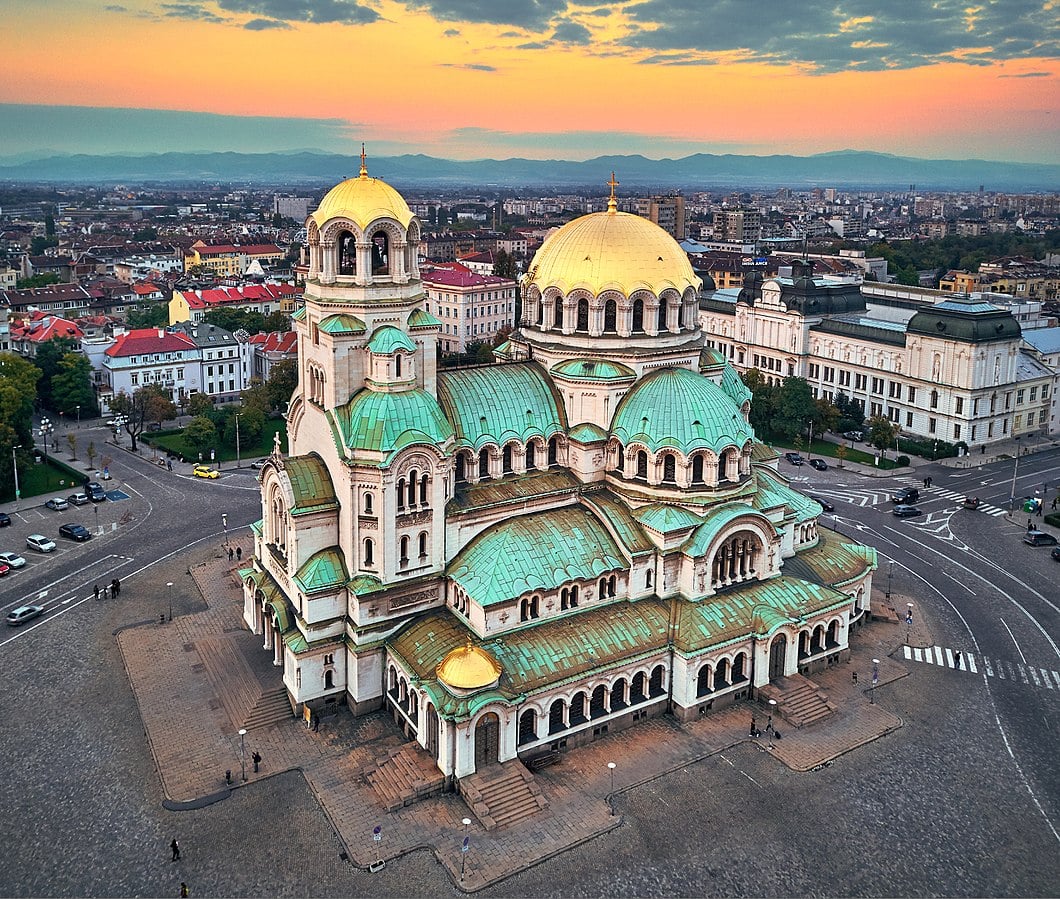
The Blue Mosque, Istanbul
After their conquest of Constantinople (Istanbul), the Ottomans wanted to leave their own stamp on the city. Between 1609 and 1616, during the reign of Sultan Ahmed I, the Ottomans constructed the Blue Mosque.
The Blue Mosque took its architectural inspiration from the neighboring Hagia Sophia, which the Ottomans had converted into a mosque after capturing the city.
Sedefkâr Mehmed Ağa was the architect in charge of the Blue Mosque’s construction. Mehmed Ağa was inspired by the work of his master Mimar Sinan and a combination of Islamic and Byzantine architecture.
The Byzantine influence is evident in the mosque’s domes of which there are five main domes and a further eight secondary ones. The overall structural profile of the Blue Mosque matches that of the Hagia Sophia.
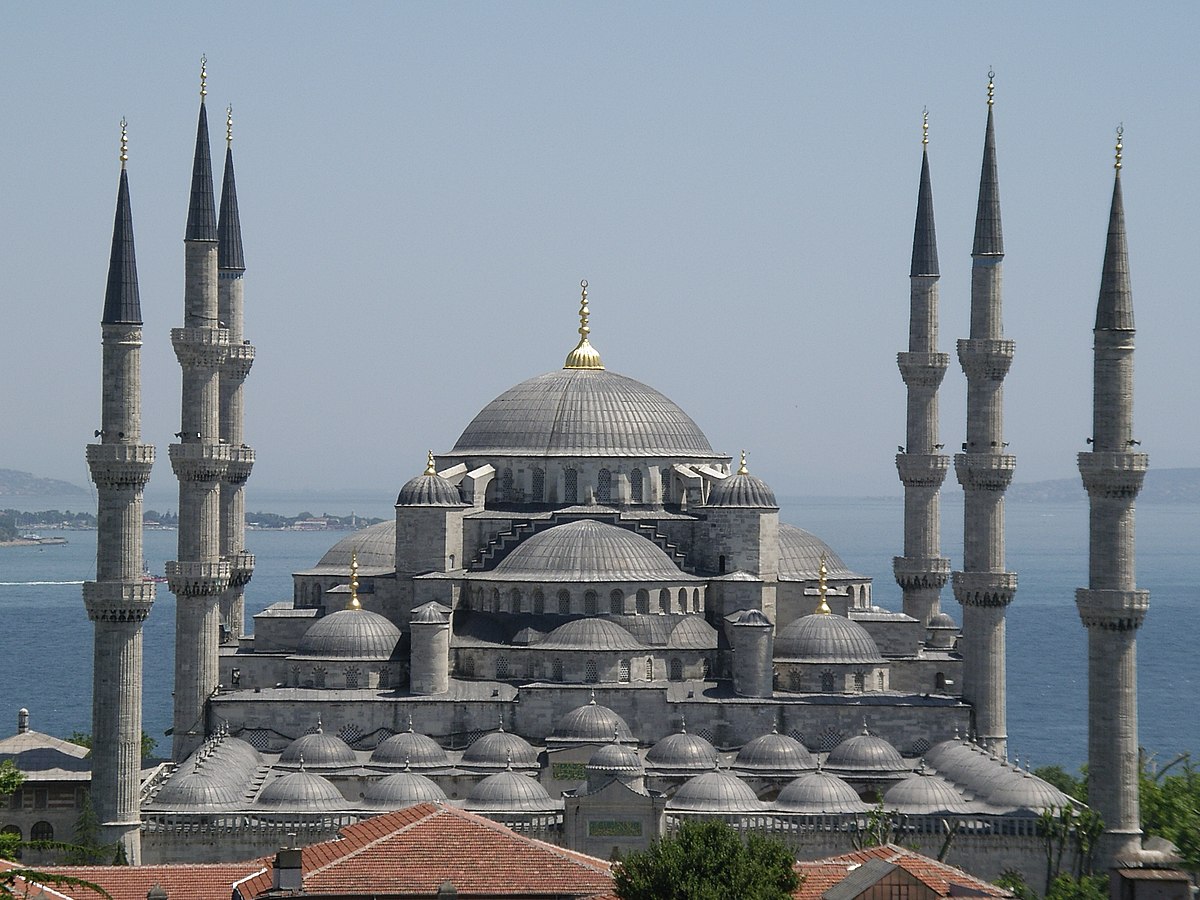
Neuschwanstein Castle, Bavaria
At a glance, Neuschwanstein Castle does not seem to have anything in common with Byzantine architecture. Construction of the historicist caste began in 1869. It was commissioned by King Ludwig II of Bavaria, although it was not completed during his lifetime.
Neuschwanstein’s Byzantine architectural influences can be found in its interior. The Throne Hall and other interior spaces are designed according to the Byzantine style. The overall effect is that the castle is a mixture of the Gothic and Romanesque styles, which dominate the exterior and structural elements, combined with Byzantine interior décor.
The Throne Hall in particular resembles a Byzantine palatial or religious space. Byzantineesque mosaics decorate the walls and the chandelier was designed to look like a Byzantine crown.
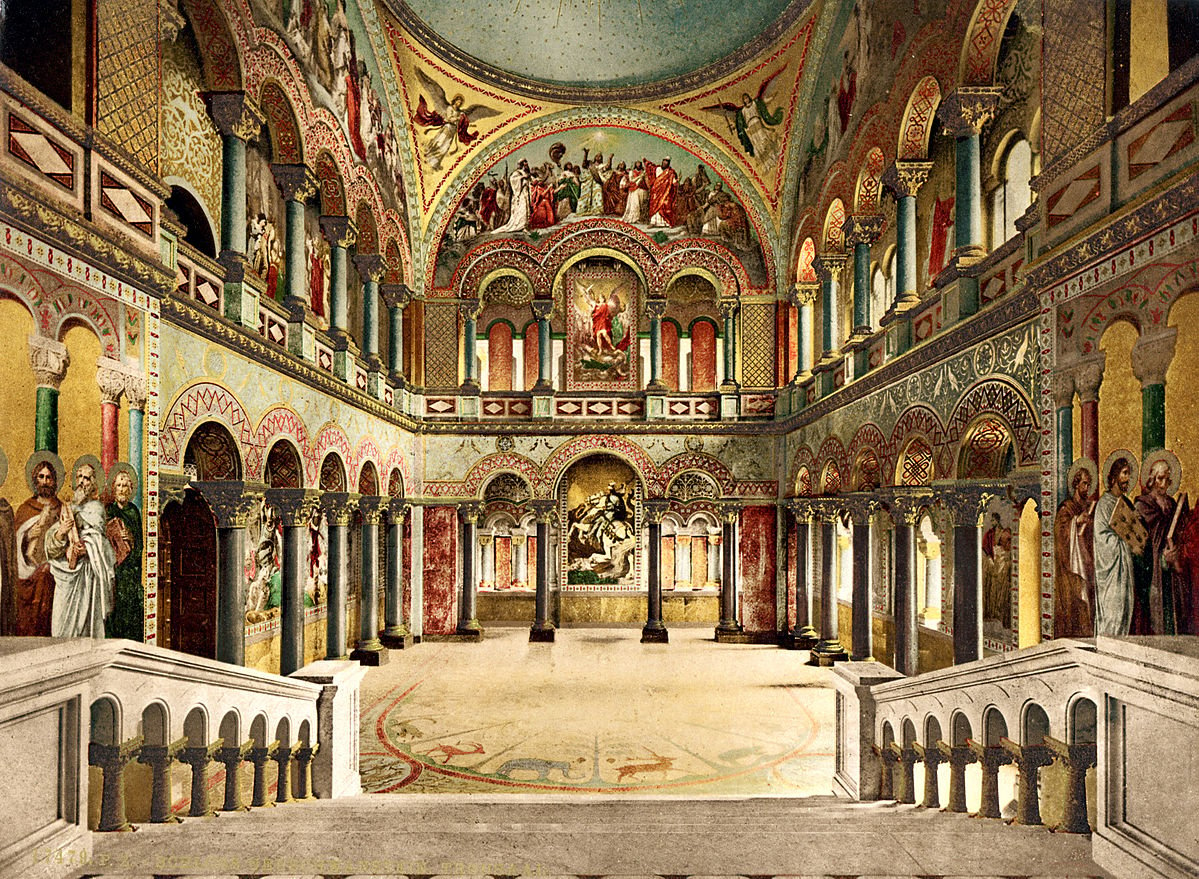
Westminster Cathedral, London
Nestled between modern office blocks in a busy part of London is Westminster Cathedral, which looks as if it was somehow transported to the British capital by the Byzantines. However, the construction of Westminster Cathedral was in fact completed in 1903 and was designed by the English architect John Francis Bentley.
Westminster Cathedral is very much an example of the Neo-Byzantine or Byzantine Revival architectural movement, which first became popular in the 1840s.
Bentley read W. R. Lethaby and Harold Swainson’s The Church of Sancta Sophia, Constantinople: A Study in Byzantine Building, which had been published just a year before the construction of Westminster Cathedral began in 1895.
Bentley was inspired by several Byzantine-era churches and cathedrals, such as the Hagia Sophia in Constantinople, St. Marks in Venice, and San Vitale in Ravenna. Westminster Cathedral’s red brick construction, columns, and interior mosaics are the most obvious signs of Byzantine influence.
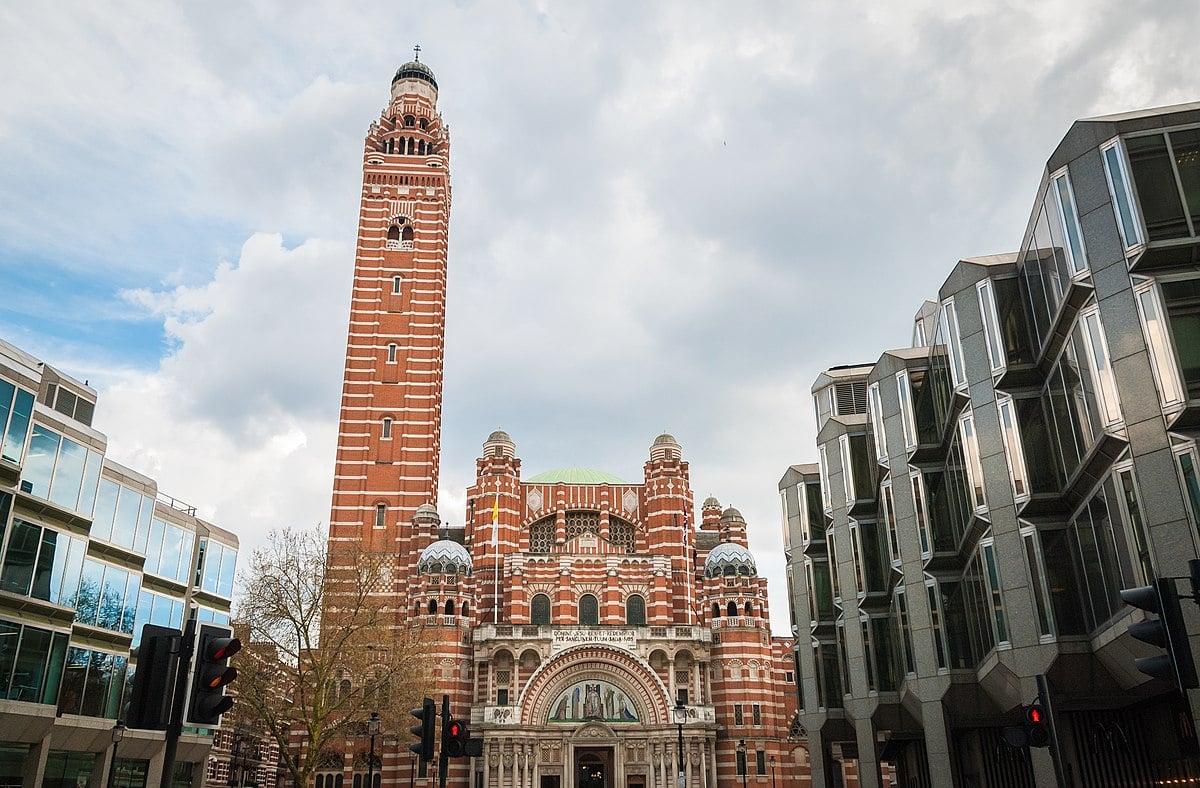
Rice University, Texas
The Byzantine Revival also became popular in the United States. The American examples are interesting because the Byzantine architectural style was applied to buildings for secular use, whereas in Europe most examples are of churches.
In 1911, the first cornerstone of Rice University was laid. The university is situated on a large 300-acre campus in Houston, Texas.
The university’s first president, Edgar Odell Lovett, wanted the campus buildings to be aesthetically appealing and opted for the Neo-Byzantine style. Many of the campus buildings feature distinctive large archways and columns as well as sand and pink-colored bricks characteristic of this style.

Byzantine architecture in video games?
A curious example of the Byzantine architectural legacy can be found in the video gaming genre. Several locations in the strategy action role-playing video game, Mount & Blade II: Bannerlord, were inspired by real-life places in the Byzantine Empire.
Bannerlord was developed by the Turkish company TaleWorlds Entertainment. The game has a fictional low-fantasy setting, but the world of Bannerlord is heavily inspired by the historical migration and early medieval periods of history.
One of the factions in the game, called the Calradic Empire, is a clear analog of the Byzantine Empire. Calradic material culture, customs, and military equipment are clearly inspired by Byzantine history.
Moreover, the Calradic cities and settlements in the game bear a close resemblance to Byzantine structures as they would have appeared in their heyday. For example, the game’s fictional fortifications resemble Constantinople’s Theodosian Walls, and the citadels and palatial structures of some Calradic castles and cities resemble the Byzantine-era Rotunda which still stands in Thessaloniki.
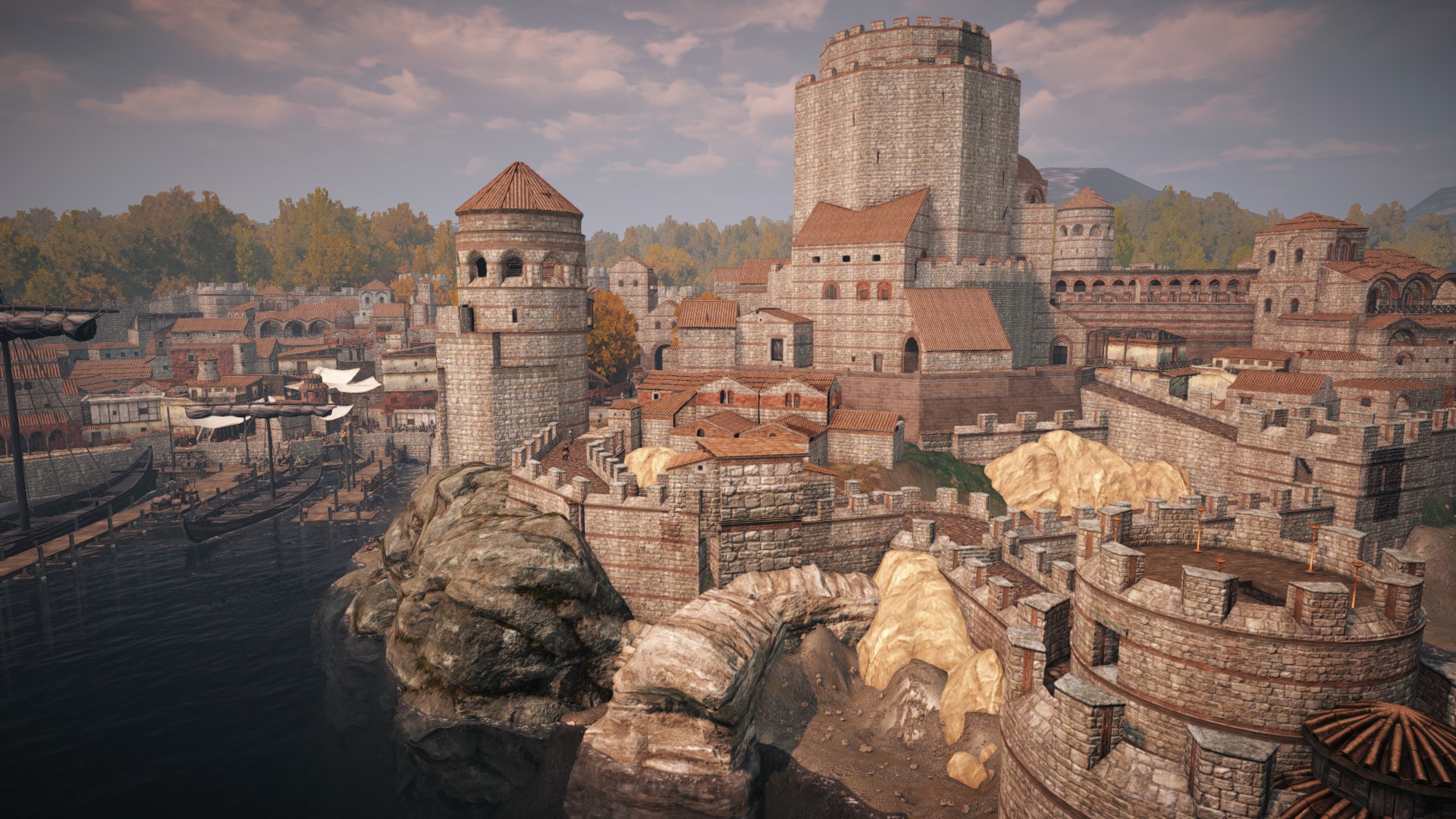
See all the latest news from Greece and the world at Greekreporter.com. Contact our newsroom to report an update or send your story, photos and videos. Follow GR on Google News and subscribe here to our daily email!



